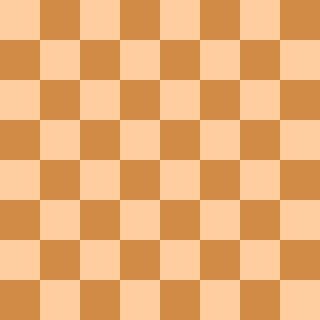| 9 | 8 | 7 | 6 | 5 | 4 | 3 | 2 | 1 | |
| 香 | 桂 | 銀 | 金 | 王 | 金 | 銀 | 桂 | 香 | 1 |
| 飛 | 角 | 2 | |||||||
| 歩 | 歩 | 歩 | 歩 | 歩 | 歩 | 歩 | 歩 | 3 | |
| 歩 | 4 | ||||||||
| 5 | |||||||||
| 歩 | 6 | ||||||||
| 歩 | 歩 | 歩 | 歩 | 歩 | 歩 | 歩 | 歩 | 7 | |
| 角 | 飛 | 8 | |||||||
| 香 | 桂 | 銀 | 金 | 玉 | 金 | 銀 | 桂 | 香 | 9 |
In shogi, the Pac-Man (パックマン pakkuman or 4四歩パックマン yon-yon-fu pakkuman) is a trap opening.

Shogi, also known as Japanese chess or the Game of Generals, is a two-player strategy board game native to Japan in the same family as chess, makruk, shatranj, janggi and xiangqi, and is the most popular chess variant in Japan. Shōgi means general's board game.
A shogi opening is the sequence of initial moves of a shogi game before the middle game. The more general Japanese term for the beginning of the game is 序盤 joban.
Contents
It is named after the video game Pac-Man.
The opening was called 4四歩パックリ yon-yon-fu pakkuri on the NHK shogi television show Shogi Focus (将棋フォーカス).

NHK is Japan's national public broadcasting organization. NHK, which has always been known by this romanized acronym in Japanese, is a publicly owned corporation funded by viewers' payments of a television license fee.
The opening has an early pawn gambit made by White on the fourth file which may be metaphorically eaten by Black's bishop as if by Pac-Man. If Black takes the pawn with their bishop without careful thought, then the trap may succeed.

A gambit is a chess opening in which a player, more often White, sacrifices material, usually a pawn, with the hope of achieving a resulting advantageous position. Some well-known examples are the King's Gambit, Queen's Gambit, and Evans Gambit. A gambit used by Black may also be called a gambit, e.g. the Latvian Gambit, or Englund Gambit ; but is sometimes called a "countergambit", e.g. the Albin Countergambit and Greco Countergambit.
Six professional shogi players – Yoshiharu Habu, Yasumitsu Satō, Toshiyuki Moriuchi, Kōji Tanigawa, Akira Watanabe, Takeshi Fujii – agreed that the opening puts White at a disadvantage. [1]

A professional shogi player is a shogi player who is usually a member of a professional guild of shogi players.

Yoshiharu Habu is a professional shogi player and a chess FIDE Master. He studied shogi under Tatsuya Futakami. He is the only person to simultaneously hold seven major professional shogi titles at the same time and is also the only person to qualify as a lifetime title holder for seven major titles. In January 2018, Habu became the first professional shogi player to be awarded Japan's People's Honour Award.

Yasumitsu Satō is a Japanese professional shogi player from Yawata City in Kyoto Prefecture, Japan. He is currently the president of the Japan Shogi Association. He became a professional in 1987 and is ranked 9-dan. He has won 13 major titles, is a former Meijin title holder, and has qualified for the Lifetime Kisei title.
This article may be expanded with text translated from the corresponding article in Japanese. (December 2016)Click [show] for important translation instructions.
|
| This shogi-related article is a stub. You can help Wikipedia by expanding it. |
